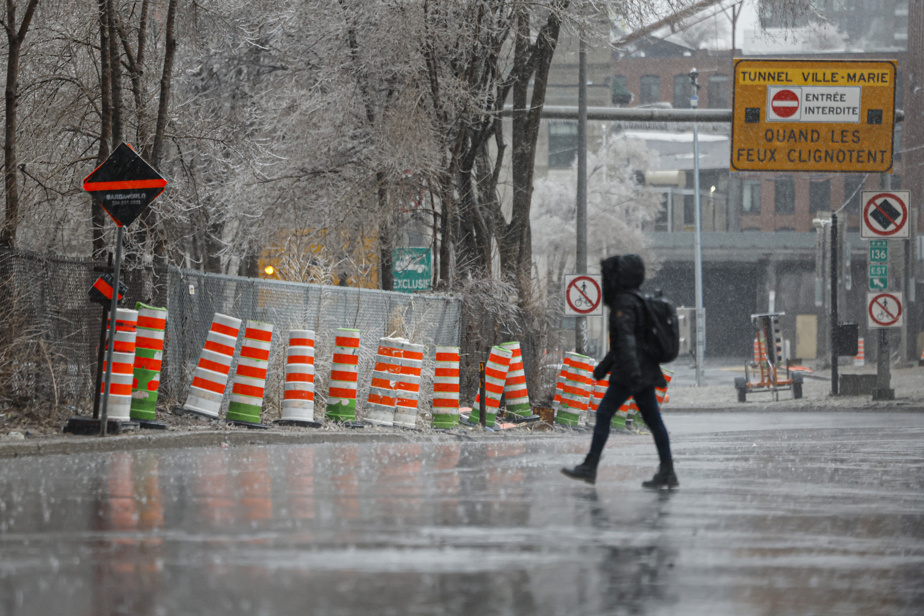How many orange cones does it take to change the light bulbs in a tunnel? And most importantly, for how long? The Ministère des Transports du Québec (MTQ) has left a dozen beacons lying around on a stretch of downtown Montreal street for at least 16 years, much to the chagrin of local workers and merchants.
At least that’s what the Google Street View photo archive suggests: cones are visible in all 14 images of the access ramp to the Ville-Marie tunnel from Cathedral Street obtained since the web giant photographs the road network of Montreal, in 2007. Impossible to know if they were there before.
“If you needed an example of how we manage cones in Montreal, here is one,” denounced Glenn Castanheira, who represents merchants in the sector as president of Montreal Centre-Ville. The neighborhood defender couldn’t believe his eyes when he saw the footage. “We’ve come to that in our cone management culture. »
The Ministry of Transport argued that cones were indeed stored at the edge of the ramp each summer: they are used to block access on summer nights when the tunnel is closed to change the 6,000 light bulbs on the ceiling.
“For the sake of efficiency, the Ministry moves its beacons in its right-of-way off the road after each maintenance operation,” said spokesperson Louis-André Bertrand. This allows the teams of the Ministry to settle more quickly to start their work and to limit the frequent delivery of beacons in the field. Tags are removed at the end of each summer season. »
For Maxime Lapierre, a Montrealer who works in the area, these cones should be stored elsewhere.
“There are often highway works during the night, and we know that the Ville-Marie tunnel has been under renovation for several years, he acknowledged. However, that does not justify having orange cones visible from the street at all times, all scattered haphazardly, strung on a strip of grass. »
At this time, “it can no longer be considered a temporary construction site and there are cleaner and less annoying ways to store them,” he added.
Especially since the “summer season” of the Ministry of Transport seems particularly long: the cones were already at the edge of the ramp on April 5, when La Presse passed, as well as in Google Street View photos dated October and of November.
“Imagine if people did that with their garbage bin. The bins come by once a week, but we’re going to leave the bin on the side of the street all the time? quipped Glenn Castanheira. If a worker arrives in a truck to move the cones, he is able to transport them there. »
The presence of orange cones in Montreal has been making headlines for years, erected as a symbol of the lack of fluidity in the streets of the metropolis.
In a study, the Chamber of Commerce of Metropolitan Montreal (CCMM) suggests that 94% of downtown arteries were blocked at one time or another during a one-year period spanning 2021 and 2022. More than a quarter of downtown orange cones are either useless or abandoned by their owners, according to the study.
Michel Leblanc, president of the CCMM, denounced at the same time “the deficient management of worksites in the public space, an overly fragmented construction industry, a systematic encroachment of private worksites on public roads, unsuitable regulations from the Ministry of Transport for construction sites in urban areas”.
At the end of March, the Plante administration held a “Construction Summit” to find solutions to the proliferation of orange cones.
Among the solutions put forward: a ban on installing cones more than 12 hours before the start of a construction site and an obligation to remove them less than 12 hours after its end, in order to reduce the duration of their presence in the streets. Montreal would also like contractors to be able to use narrower cones.

